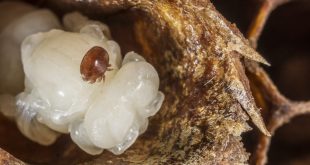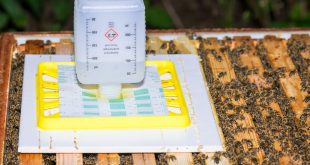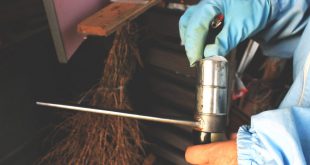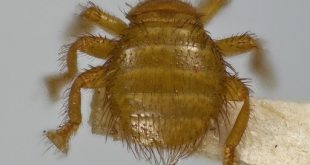Mites are one of the greatest honey bee health threats. They affect honey production and the ability of bees to carry out pollination activities. Essential oils for honey bee mite control save beekeepers from the economic losses they stand to incur.
Read More »Varroosis Treatment in Honeybee Colonies
Varroosis of honey bees is a commonly known and widespread disease. It also goes by other names such as varroatosis or Varroa mite infestation. Its main cause is the Varroa destructor or Acari Varroidae mite. This is a mite that targets the honey bee in all its life cycle stages, affecting many species of bees. It is believed to have originated from the Far East where its main host is the Asiatic honey bee. Earlier research suggests it was first introduced to the US in the 1950s. It has since spread to other countries globally, with the exception of Australia where no single case of the mite has been reported. The mite spread rapidly as a result of importation of queen bees from areas that are infested. Foraging bees can also introduce the mites to healthy colonies during pollination. Severe cases of varroa mite infestation can lead to colony collapse.
Read More »Formic Acid Treatment for Honey Bees
Controlling parasites is standard part of beehive management. One such parasite of honey bees is the Varroa mite, which can causes colonies to get weak and deformities to appear in bees. Various treatments are applied by beekeepers to keep Varroa mites in check. Formic acid is one such treatment used and it can be applied in various forms. You can make your own formic acid preparations for the various methods of application. However, there are also some formic acid treatments for honey bees solutions that are sold to beekeepers. They are easy to use and can be applied by both beginner and experienced beekeepers.
Read More »Treating Mites with an Oxalic Acid Fogger
Beekeepers use various methods to control mites in their beehives and apiaries. With more inclination towards natural Varroa mite control, substances such as oxalic acid are finding increased use and acceptance as miticides. In this article, you will receive insights into treating Varroa mites with an oxalic acid fogger.
Read More »Bee Louse Treatment – Tips and Advice
The bee louse is a parasitic pest of honey bees. It is often found on the head of the bee in an infestation. This is because the pest feeds on honey as well nectar from the mouth-parts of honey bees. Bee lice reproduce in the beehive. Their larvae burrow through honey comb and can cause a lot of losses in both brood and stored honey. Avoiding such losses is important in beekeeping. Severe infestations by the bee louse cost you your beehive products and weaken the honey bee colony. This guide leads you through understanding infestations and as well as providing tips and advice for bee louse treatment.
Read More » BeeKeepClub Resources and Guides for Beekeepers
BeeKeepClub Resources and Guides for Beekeepers





